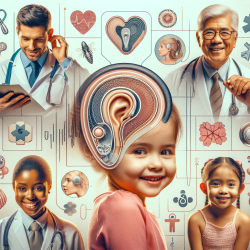Migraines in adolescents are not only common but also significantly impact their daily activities and quality of life. According to the research article "Management of Migraine in Adolescents," early recognition and aggressive therapy are crucial for controlling migraine attacks and preventing their progression into more debilitating conditions.
Understanding the Scope of the Problem
The study highlights that headaches are a prevalent issue among children, with up to 75% experiencing significant headaches by age 15. Of these, 28% meet the criteria for migraines. The chronic nature of migraines can severely disrupt schooling and social interactions, leading to long-term socioeconomic consequences.
Effective Management Strategies
For practitioners, implementing a comprehensive approach to migraine management is essential. This involves:
- Early Recognition: Identifying symptoms early can lead to more effective interventions.
- Aggressive Therapy: Utilizing both acute and prophylactic treatments to manage symptoms.
- Biobehavioral Interventions: Incorporating lifestyle changes and biofeedback techniques can significantly reduce migraine frequency and severity.
Acute and Preventative Treatments
The study suggests that NSAIDs like ibuprofen are effective for acute treatment when administered promptly. For more severe cases, triptans may be necessary, though they are not yet FDA-approved for children. Preventative treatments include medications such as topiramate and divalproex sodium, which have shown effectiveness in reducing headache frequency.
The Role of Biobehavioral Interventions
Biobehavioral therapies play a pivotal role in managing adolescent migraines. These include:
- Lifestyle Management: Encouraging regular sleep patterns, balanced nutrition, and adequate hydration.
- Biofeedback: Teaching patients to control physiological responses related to headaches.
- Cognitive Behavioral Therapy (CBT): Helping patients develop coping strategies for stressors that may trigger migraines.
The integration of these therapies has been shown to rival traditional pharmacological approaches in effectiveness.
Encouraging Further Research and Implementation
The findings from this research underscore the importance of a multi-faceted approach to managing adolescent migraines. Practitioners are encouraged to delve deeper into these methodologies and consider how they can be integrated into their practice. By doing so, they can significantly improve the quality of life for young patients suffering from migraines.
To read the original research paper, please follow this link: Management of migraine in adolescents.










